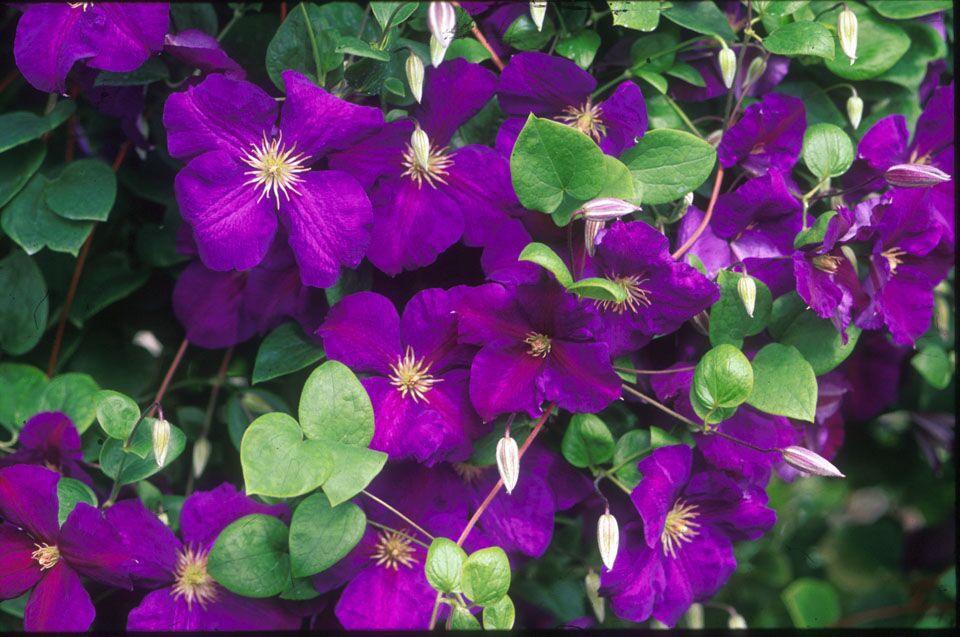If your clematis vine is growing but not flowering, there are several reasons (or a combination of them) that could be preventing your clematis from flowering.
Improper Pruning
Pruning plants is both an art and a science. We prune for the welfare of the plant and our own aesthetics.
With clematis, you really need to know what you’re doing because it’s easy to accidentally remove stems that would have provided flowers.
To prune properly, the first step one is to know which type of clematis you have.
Clematis are generally divided into Types/Groups 1, 2, and 3.
Types of clematis and their pruning groups.
Group 1
Bloom in spring on old wood and do not require pruning to flower next year.
Examples:
Clematis montana
Clematis alpine
Clematis macropetala
Clematis Armandii
Group 2
Bloom in early summer, first on old wood, then on new wood, and can be pruned after flowering.
Examples:
Nelly Moser
Vyvyan Pennall
The President
Henryi
Ramona
Group 3
Bloom in late summer on new wood.
This is the one group we cut down each winter, anywhere from 6 to 24 inches, depending on the maturity of the plant.
Examples:
Clematis Jackmanii
Clematis viticella
Clematis texensis
Prince Charles
Clematis teriflora
Ernest Markham
Hagley Hybrid
Nutrient Imbalance
If your clematis is healthy and growing but does not have flowers, it could be an issue with the soil, specifically a nitrogen imbalance.
Check the label on your fertilizer. Fertilizers are labelled to show the main macro-nutrients: nitrogen (N), phosphorus (P), and potassium (K).
Over fertilizing or excessive nitrogen may be the problem with your non-flowering clematis because this nutrient stimulates leafy green growth, sometimes at the expense of flowering. Consider switching to Jack’s Blossom Booster if this is the case.
Inadequate Light
Is your clematis getting adequate light?
Clematis can grow in partial shade, but, overall, they perform best with at least 6 hours of sun or bright shade a day.
A shady location may delay growth and flowering.
Transplanting to a better location may be required.
Too Young to Bloom
If your clematis is fairly new (under 3 years old), appears healthy, yet produces just a few blooms, this can be normal, assuming productive stems have not been pruned away.
As the plant ages, the roots grow, giving the clematis a greater ability to produce more shoots and blooms.
In other words, give the plant some time to mature. It may be just fine next year.

